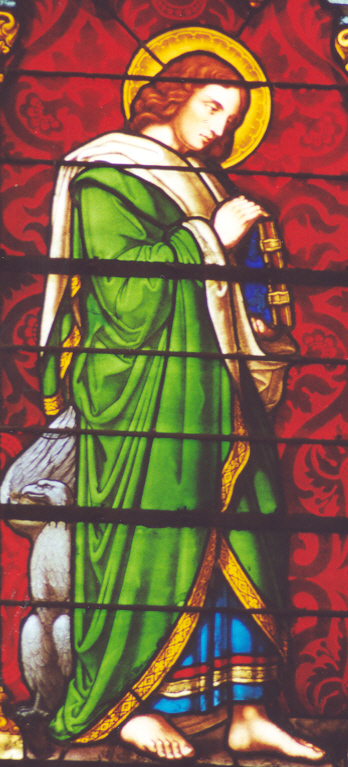
John 13:31-33a, 34-35
The Essence of Glory by Fr. Jerome A.
Magat
Reprinted with permission of "The Arlington Catholic
Herald"
Home Page
To Sunday Gospel Reflections Index
John wrote to show that Christ was
the Messiah, the Divine Son of God.

When
Judas had left them, Jesus said, "Now is the Son of Man glorified, and God is
glorified in him. If God is glorified in him, God will also glorify him in
himself, and God will glorify him at once. My children, I will be with you
only a little while longer. I give you a new commandment: love one
another. As I have loved you, so you also should love one another.
This is how all will know that you are my disciples, if you have love for one
another."
The
Catholic Faith contains within itself several mysterious paradoxes. For
example: The King of Kings and Lord of Lords was born in poverty and born of a
virgin. The Apostles, charged with the spreading of the Faith, were mostly
unsophisticated men of little education. This week’s Gospel passage contains
another. After Judas leaves the upper room to betray our Lord, Jesus reveals
that His glorification is about to occur. For Our Lord, glorification is
understood in terms of His passion, death and resurrection. While it’s very
easy to understand how the resurrection is glorious, it’s more difficult to see
how His passion and death constitute a part of Christ’s glory as well. Our
society does not associate suffering with glory. And yet, Catholics believe
that it was precisely Jesus’ suffering and death for our sins that was the
greatest work He ever accomplished for us.
Our institutional disdain for suffering is sometimes expressed in modern religious art. In some sanctuaries, you will find what our commonly known as “resurrecifixes.” These are images of the Resurrected Christ emerging from a cross. And yet, the liturgical law of the Church mandates that sanctuaries must contain a true crucifix that shows the five wounds of the passion. By contrast, the resurrecifix expresses a desire to bypass the suffering and death aspect of Christ’s glory. And yet, we know that this does not coincide with the reality of our lives. The reality of our lives involves suffering, trial and hardship. This is precisely why the Church requires us to have a crucifix in the sanctuary – it connects our lives and the sufferings we endure to the suffering of Jesus. In order to experience the joy of Easter Sunday, we must endure the Good Fridays that our Lord permits us to experience. In fact, the significance and meaning of Easter Sunday can only be understood in light of the events of Good Friday. The two events reveal that as evil and dark as Good Friday was, it could not vanquish Our Savior in the ultimate sense. His victory on Easter Sunday was a victory over suffering and death itself. The devil gave Christ his attempt at vanquishing Him and Our Lord conquered and won.
To suffer graciously is to share in Jesus’ glory. Those who suffer with grace and hope teach us to become poor in spirit – persons totally dependent upon God. They provide for us opportunities for charity and show us the depths of humility. Those who suffer also teach us possibility of remaining joyful in the face of trials. Most persons associate joy merely with happiness of giddiness. The Christian joy, which is a fruit of the Holy Spirit, involves much more – it is the desire for God and/or to delight in the things of God. So, it is quite possible to be joyful in one’s suffering, in spite of the absence of giddiness. In Christ, suffering reveals to us the depth of His love. He embraced His suffering joyfully, even though there was nothing emotionally happy about the moment. Our Blessed Lord invites us down the same path – to understand with greater clarity that our suffering can be an intimate participation in the glory of His suffering and death, which led to our hope – the resurrection.
Please consider a tax deductible gift to support this web site.